
What today’s metrics are missing…
Yesterday, I published a post on improving the value of metrics in managing the Social Media performance of individuals and businesses. The inspiration for writing that came from the recent flurry of posts from this week’s “eMetrics” conference, and my own reflection on whether the current approaches and tools (and some of the improvements that are emerging) were going to be effective in addressing the gaps that exist today.
I received some good feedback on that post, some from individuals like myself who struggle with these metrics and their relevance for ourselves and our clients, and others from vendors simply trying to inform me that some of the gaps I was observing were not as significant as I might have been suggesting (perhaps a fair assessment).
I talked a lot yesterday about choosing the “right metrics”, and remain convinced that “metrics” are certainly an important piece of the equation. Choosing the wrong metrics can send you in the wrong direction quickly. And nowhere is that more visible than in the stampede toward maximizing performance on what I’ll call the “generally accepted” set of KPI’s. You all know what those are. And from my comments yesterday, you also know the dangers I see in all of us gravitating to the same “common denominator” even though we recognize that an infinite array of unique objectives exists.
Targets – The “forgotten sibling” of metrics
As I spent a little time reflecting on all of this, it became clear to me that the main area that needs addressing may not be the actual metrics themselves, but rather making the metrics, and especially the targets, more relevant to the area being managed. And this is a problem that faces all businesses, both within and outside of Social Media space. So, today, I am going to focus on that part of a business metric that “completes it”, the TARGET itself: How it is set, challenged, managed, and delivered upon.
You might be saying to yourself that ‘setting targets should be a relatively simple and easy process’. Well, for some, the steps may be simple, but executing the process consistently is far from it. Companies and individuals are constantly asking the question “where and how high” they should set the bar?” To answer that question involves some good introspection and analysis. And to do that well, you often need good information and benchmarks on which to base those decisions. But most importantly, it takes knowledge and awareness of what a “target” is, the role it plays in the performance improvement cycle, and the process by which targets should be established, vetted, and updated.
A real blind spot for many…
It’s truly amazing that, amidst all of the data tracking and information that surround us, so little time is actually paid to thinking about, and establishing THE TARGET . What good is measuring something if you don’t know whether you should be shooting for 10, 50, or 5000? So it’s hard to imagine performance tracking and management adding any real value without accompanying targets.
Yet that is exactly what is taking place – not only inside of Social Media, but industry in general. When I am helping a client implement a corporate performance management system or process, a key part of that engagement is often inventorying and improving the KPI’s and business metrics that should be currently “fueling” that process. As part of that step, I am naturally going to be asking what their aspirations, goals, and targets are for their specific metrics and KPI’s.
But more often than not, when I do ask that question, I get blank stares. Sometimes, if I’m lucky, I’ll get an answer like “to get better” (which may be a “broad goal” but far from a “target”). I ascribe this not to corporate ignorance (some of these companies are pretty big and reasonably successful in their market), but rather a failure of leadership to translate and cascade their broad goals or macro level targets for the “company level KPI’s”, into more actionable targets at the operating level.
But whatever the reason, using metrics without targets is about as helpful as using GPS navigation without a programmed destination. And in the absence of targets, the best you’ll get is mindless (and often costly) tracking of statistics, and if you’re lucky, some backward-looking trends. What you won’t get is a point of reference for evaluating success, and little ability to correlate success with the deployment of new strategies or initiatives. And in the end, aren’t those the ultimate goals of our performance measurement and improvement activities?
The 3 R’s of good target setting…
As you set up your process and routine for better “target setting” (which should take place both in the planning and review cycles of your business), you’ll want to pay real close attention to what I call the “3 R’s” of target setting. Those include making your targets:
- Real – By “real”, I mean a genuine, thought through, meaningful number, based on both data and introspection. To “improve from last year” or to “get better by x percent” is not a real target, but merely a statement of an aspiration or goal. Shoot for a specific number and be able to say why you chose it. The more genuine and real the target is, the better you will be able to articulate it in your leadership narrative , and the stronger your ongoing performance dialogue and problem solving will become as an organization.
- Relevant- By relevant, I mean both contextually relevant, and realistic. And this is always unique to, and highly dependent on the business, work unit, or individual being measured. In fact, in my view, this is the number one breakdown in social media metrics in that there is often no connection between a company or individual goal (THEIR unique objective) and the target they are using for their metrics tracking, be it a follow count, an engagement score, or a Klout measure. The use of each of these measures can carry very different implications depending on the specific user objective at play, just as a business indicator would be across two different industries or segments of the company. I’d like to see a scenario in which users of SM statistics could articulate a set of aspirations (type of influencer, specific industry or niche, and maybe size of market–(and I’m still noodling with this obviously)), and the tool or technology that would help them select a unique target range to achieve that objective. (For example, a follow count target of “a”, Klout score target of “b”, engagement score target of “c”, and velocity score target of “d”). The point is to try and align the measure to the context being managed. How you get there, whether though “normalizing the data”, or simply making informed judgments, is less important than making sure the context differences are reflected.
- Robust- Robustness means testing the target against what should be possible in terms of improvement. Often, this is the role that performance benchmarking can and should play in the process, assuming it’s done right and you’ve normalized somewhat to make the comparisons relevant. Benchmarks can tell you if you’re in the right ballpark. But it goes beyond simple benchmarks in evaluating the robustness of a target. I often find that a formal set of internal challenges to the targets makes a lot of sense. While it’s got to be a safe and constructive process to work effectively, a good challenge would ‘sniff out’ a target that passes a benchmark test, but would identify, as well, areas in which there may exist considerably more opportunity (i.e., the target is insufficiently aspirational). Or it could challenge areas in which the metric could be “gamed”.
Here’s a sports example. Suppose you’re a golfer, and you want to bring down your score, and one of the metrics you elect to track is the percentage of “greens hit in regulation” (i.e., you’ve gotten to the green within par allowing for 2 putts after the green is reached). At first you say you want to “improve” from your baseline of 60%, but that really doesn’t reflect any quality thinking about improvement potential. After refining your thinking, however, you decide that 65% would be a good target (That’s REAL). You then do some benchmarking and find that an average benchmark would suggest that a good target is 50%. But after normalizing for ‘those better than a 5 handicap’ (which in this example may be your strategic goal), a more relevant target might be 70% (That’s RELEVANT). But after challenging that, and looking at your trend, and the way you’ve been hitting lately, you may conclude that going from 60 to 70% is too shallow an aspiration (in fact you may have already achieved that, not on average, but certainly in your last 3 rounds), so you elect to go with the benchmark of the “top quartile” of those 5 handicappers on “their” GIR performance and shoot for 75% instead (That’s ROBUST).
So next time you review your metrics, don’t forget the importance of having targets, and making sure they meet the 3R’s test of quality.
Author: Bob Champagne is Managing Partner of onVector Consulting Group, a privately held international management consulting organization specializing in the design and deployment of Performance Management tools, systems, and solutions. Bob has over 25 years of Performance Management experience and has consulted with hundreds of companies across numerous industries and geographies. Bob can be contacted at bob.champagne@onvectorconsulting.com


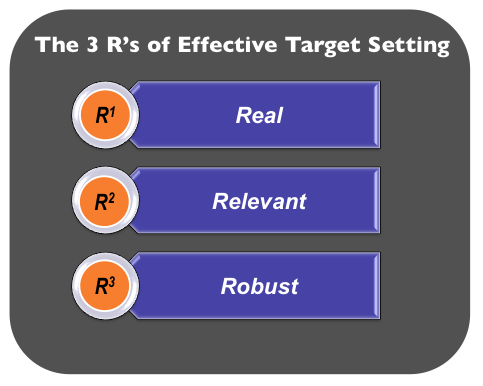


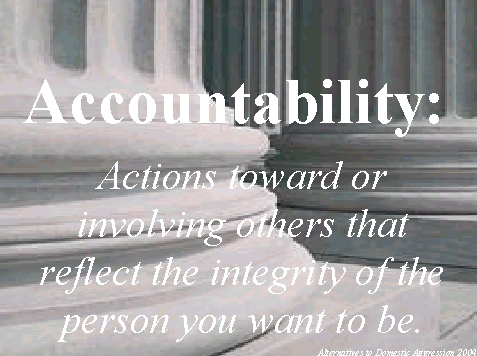

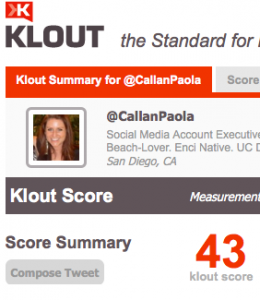 Is what we’re measuring today meaningful?
Is what we’re measuring today meaningful?
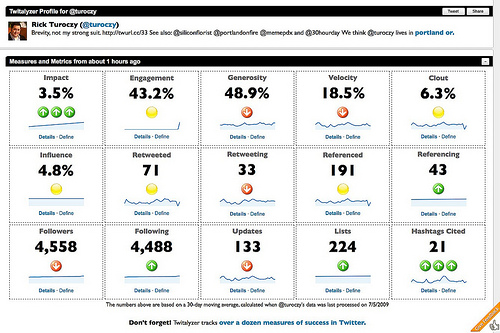



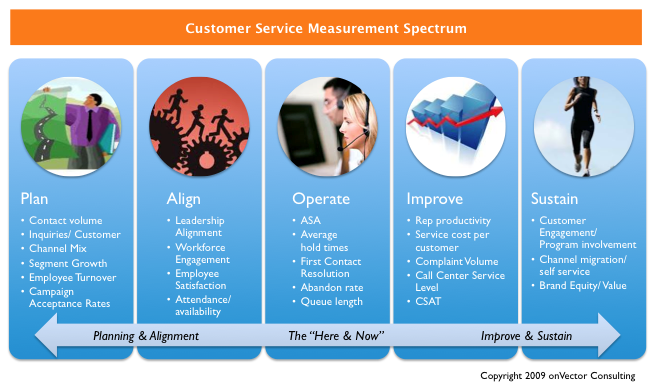


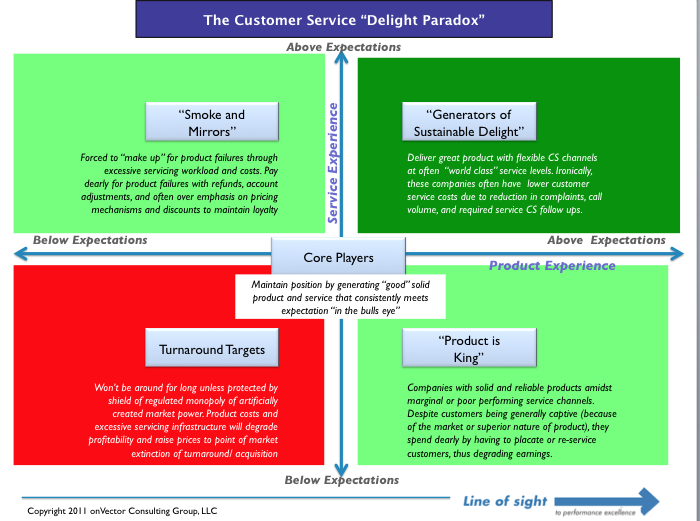 And while, it’s not the “holy grail” on the chart above, operating in the cross hairs (“core players”) can actually be a pretty safe place to play. It won’t earn you much in the way of lagniappe or high levels of customer “delight”, but there is something to be said for consistently meeting both expectations ALL THE TIME. Customers value that more than we often think. Look no further than Southwest Airlines and McDonald’s for examples in this domain.
And while, it’s not the “holy grail” on the chart above, operating in the cross hairs (“core players”) can actually be a pretty safe place to play. It won’t earn you much in the way of lagniappe or high levels of customer “delight”, but there is something to be said for consistently meeting both expectations ALL THE TIME. Customers value that more than we often think. Look no further than Southwest Airlines and McDonald’s for examples in this domain.